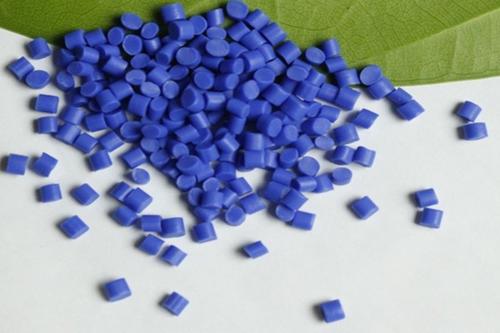How to measure the thermal properties of Jiangmen engineering plastics
Engineering plastics can be used as engineering materials and plastics instead of metal to manufacture machine parts. Engineering plastics have excellent inductive functions, such as high rigidity, small creep, high mechanical strength, good heat resistance and good electrical insulation. They can be used in harsh chemical and physical environments for a long time and can replace metals as engineering structural materials, but the price is expensive and the output is small. The thermal function of engineering plastics is an important policy that most customers pay attention to when selecting high-grade special engineering plastics. Most customers report that the heat-resistant temperature of plastics is relatively large compared with the temperature advocated by various plastic manufacturers; In most cases, the wear-resistant function policy of plastics relies on customers' continuous blind trial production and recognition, and now there is no clear guidance basis. The wear-resisting function of special engineering plastics is closely related to the temperature resistance of plastics to a great extent.
In the market, we often encounter some problems: the application temperature of plastic products is not high, why do some high-temperature plastic products supplied soften? Why use some wear-resistant materials that are highly publicized in the market, and the effect of wear is very fast?
Measuring parameters for thermal function of engineering plastics
Even a small change in the temperature of plastic products is enough to affect the strength and rigidity.
1) continuous operating temperature
Indicate the heat resistance of plastic molded products. Generally, it is divided into physical heat resistance and chemical heat resistance. The former refers to the function of regular shaped plastic molding samples to maintain the product shape under the specified heating temperature; The latter indicates the thermal stability of molecular bonds in plastic molding. It mainly indicates the heat-resistant function of plastic molding samples under no-load conditions.
2) glass transition temperature
When the temperature is higher than TG, the amorphous polymer will become soft and rubbery. It is very important to ensure that the operating temperature of amorphous polymers is lower than TG, so as to achieve the desired mechanical function.

3) thermal deformation temperature
Load deflection temperature is a method for determining the rigidity of plastics at high temperatures. It is obtained from the temperature when the specimen shows the indicated deformation (0.254mm) under a certain load and at a certain speed. Because the load deflection temperature is the temperature indicating that it is close to the lower limit of the modification temperature of the glass flower in the amorphous plasticity, it can become a practical reference policy. However, in the calculation of crystalline plasticity, the temperature between the glass transition modification point and the crystallization melting point is indicated at the load deflection temperature, so it is meaningless in theory or in practice, and the error of the measurement effect is also very obvious. This parameter is used to measure the temperature tolerance of different materials under short-time temperature rise and load.
4) linear expansion coefficient
Linear expansion coefficient refers to the expansion share of plastic molded products when the temperature rises by 1 ℃ under a certain pressure. It is indicated as the linear expansion coefficient relative to the unit length. This coefficient is one of the important policies to understand the degree of product size change with the temperature rise of plastic formed products.
5) thermal conductivity
The thermal conductivity indicates the heat of plastic products with a temperature difference of 1 ℃, an area of 1cm2 and a thickness of 1cm within 1s. It is a reference policy for studying the thermal insulation of policy products when planning products.
6) specific heat capacity
Specific heat capacity refers to the heat capacity relative to the unit mass (LG) of plastic molded products. Generally, it indicates the heat required for plastic molded products when the temperature rises by 1 ℃. The specific heat capacity is the same as the thermal conductivity, which is the reference data for studying the temperature rise of policy products during product planning.
7) embrittlement temperature
Clamp one end of the formed sample with regular shape and size with the experimental pliers, fix it in the experimental tank, soak it in the specified low-temperature heat transfer foreword at all levels, place it for (3+-0.1) min, and then knock it once with the impact hammer to calculate the embrittlement temperature from the damage effect of the sample. When it is used at low temperature, it is a necessary factor to be considered in planning.
Source: Jiangmen engineering plastics http://www.wywantong.com/
-
04-13
PVC Engineering Plastics: how PVC plastic pipes are formed
The forming process of PVC plastic pipes should start from the raw materials of PVC plastic granules, which can be divided into soft PVC and hard PVC according to the added amount of stabilizer, plast
-
11-12
What is the filling property of Jiangmen engineering plastics
What is the filling property of Jiangmen engineering plasticsIn recent years, PC modified plastics have developed rapidly in China, and its industrial system is gradually established and improved. Th
-
10-08
Jiangmen Engineering Plastics: how to classify Jiangmen engineering plastics?
How to classify Jiangmen engineering plastics? 1. Classification by application characteristicsAccording to the different application characteristics of famous plastics, plastics are usually divided
-
08-30
Application scope of PBT engineering plastics
PBT engineering plastics are widely used in electronics, car industry, office machinery and other fields. In Japan and the developed countries in Europe, PBT engineering plastics are mainly used in t